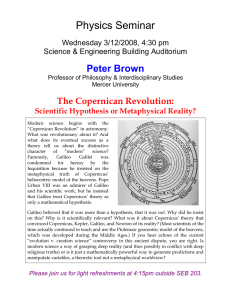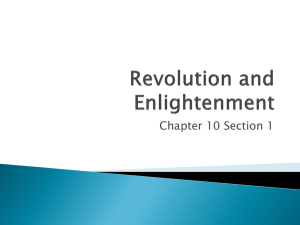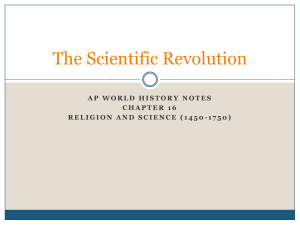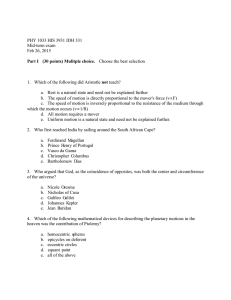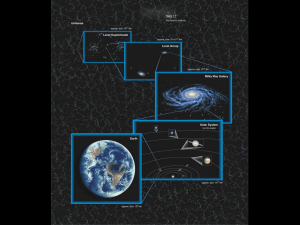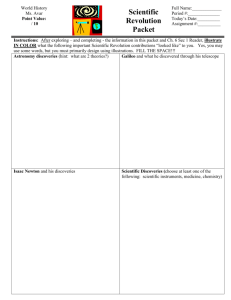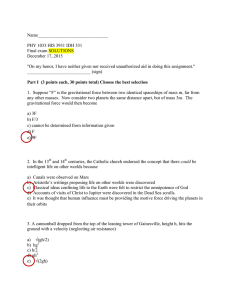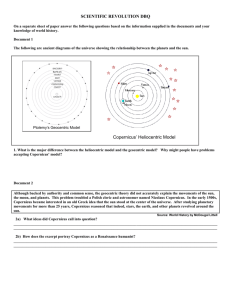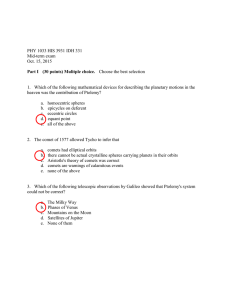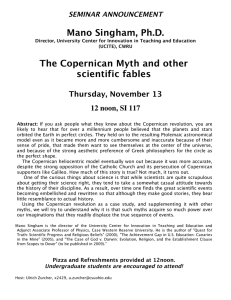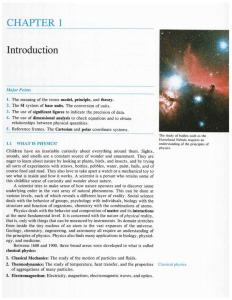Midterm Essay Grading – points to cover
advertisement
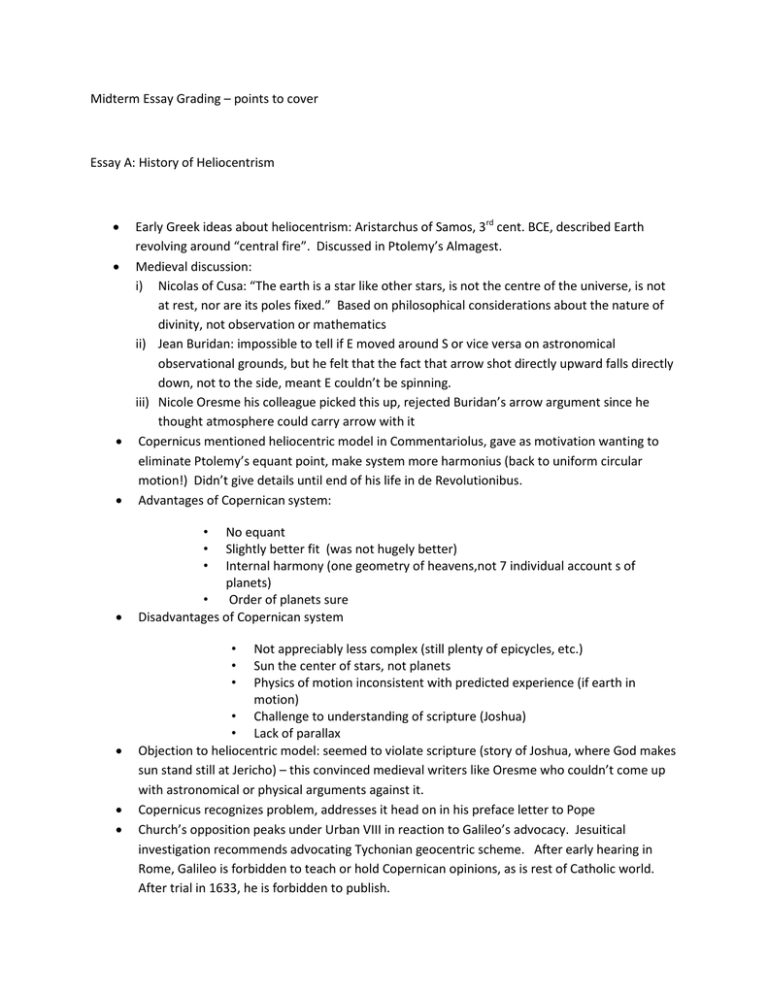
Midterm Essay Grading – points to cover Essay A: History of Heliocentrism Early Greek ideas about heliocentrism: Aristarchus of Samos, 3rd cent. BCE, described Earth revolving around “central fire”. Discussed in Ptolemy’s Almagest. • Medieval discussion: i) Nicolas of Cusa: “The earth is a star like other stars, is not the centre of the universe, is not at rest, nor are its poles fixed.” Based on philosophical considerations about the nature of divinity, not observation or mathematics ii) Jean Buridan: impossible to tell if E moved around S or vice versa on astronomical observational grounds, but he felt that the fact that arrow shot directly upward falls directly down, not to the side, meant E couldn’t be spinning. iii) Nicole Oresme his colleague picked this up, rejected Buridan’s arrow argument since he thought atmosphere could carry arrow with it • Copernicus mentioned heliocentric model in Commentariolus, gave as motivation wanting to eliminate Ptolemy’s equant point, make system more harmonius (back to uniform circular motion!) Didn’t give details until end of his life in de Revolutionibus. • Advantages of Copernican system: • No equant Slightly better fit (was not hugely better) Internal harmony (one geometry of heavens,not 7 individual account s of planets) • Order of planets sure Disadvantages of Copernican system • • • • Not appreciably less complex (still plenty of epicycles, etc.) Sun the center of stars, not planets Physics of motion inconsistent with predicted experience (if earth in motion) • Challenge to understanding of scripture (Joshua) • Lack of parallax Objection to heliocentric model: seemed to violate scripture (story of Joshua, where God makes sun stand still at Jericho) – this convinced medieval writers like Oresme who couldn’t come up with astronomical or physical arguments against it. Copernicus recognizes problem, addresses it head on in his preface letter to Pope Church’s opposition peaks under Urban VIII in reaction to Galileo’s advocacy. Jesuitical investigation recommends advocating Tychonian geocentric scheme. After early hearing in Rome, Galileo is forbidden to teach or hold Copernican opinions, as is rest of Catholic world. After trial in 1633, he is forbidden to publish. • • • • • • • Galileo’s argument for Earth spinning include his analysis of inertial motion at Earth’s surface, analogy with doing an experiment (playing tennis!) on a moving ship. This related more to Earth’s spinning than to its revolution around the sun, however. He proposed that the tides could distinguish this latter motion, since he felt combined rotating and revolving would lead to a sloshing motion of the oceans (not correct). Specific point penalties: -5 for neglecting any discussion of ancient/medieval philosophers who mentioned heliocentrism -2 for neglecting medieval philosophers “” -2 for stating Copernican system was significantly more accurate than Ptolemaic -2 no mention of scriptural basis for church’s objection to Copernicus Essay B: Weinberg quote Idea here was to discuss history of the scientific method, of approaches to understanding nature. Weinberg argues that not only is nature there, waiting to be discovered, but the scientific method is, also. The development of the method adapted itself to the remarkable aspects of nature. • • • Pythagoreans and Milesians begin in 6th cent BCE to study nature on its own, without consideration of divine influence. Search for mathematical (geometrical) regularity in heavens. Aristotle introduces elements of empiricism, or observational methods to study of nature, but applies methods more to biological and medical sciences (dissection, classification). Regarding observed phenomena, both on Earth’s surface and in heavens, he states rules that he believes account for the observed behavior, invented from his notions of what is “natural”, but does not really test them. In particular, inventing artificial situations to test his hypotheses does not occur to him, nor do apparent obvious paradoxes (why do feathers and small stones of equal weight fall at different rates?) bother him. Increasingly accurate observation of heavenly motions carried on over millennia not so much because philosophers felt they could understand the underlying causes better, but because such observations were needed for calendars, navigation, etc. Copernicus, Brahe, Kepler were all concerned with increasing the accuracy of observations of the heavens, Brahe of course first among these. • • Kepler is the first to ask questions about the causes of motion. He evolves from a Platonist, with his fascination with the nested regular solids, to a physicist, who asks why the planets move in ellipses as they do. Although his answer is wrong (he thinks magnetism from sun pushes planets in their orbits, despite the fact that he understands gravitational force at qualitative level!), he’s raising the question for the first time, and pushing Galileo and later Newton. His interest is always in understanding God’s heavenly miracles mathematically, however, so he never applies this reasoning to Earthly motions. Galileo is revolutionary figure in this story. He uses abstract reasoning (e.g. “thought experiment” with composite falling bodies arguing against Aristotle), and is mathematically trained, but also willing to “lower himself” to test premises with experiments. Realizes that his discovery of parabolic trajectories of projectiles imply that mathematics is useful for the understanding of Earthly motions. And he states that he can understand idealized situations (e.g. vertically falling bodies in a vaccum) by studying prepared, artificially created ones (measuring rolling times of balls on inclined planes).
